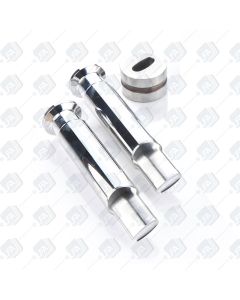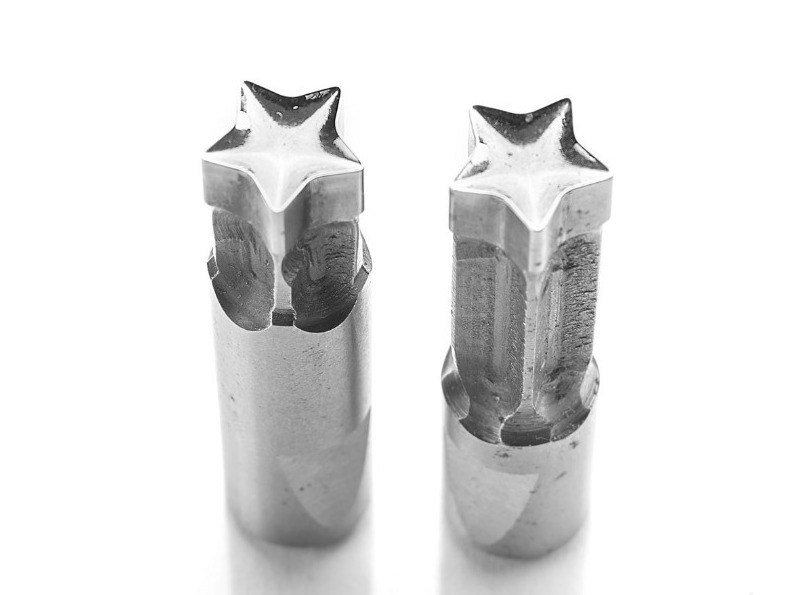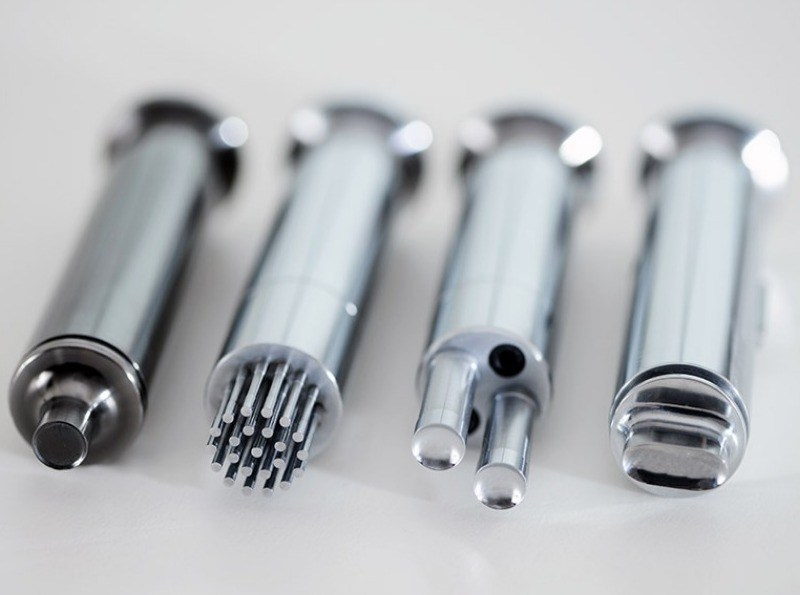It is time consuming and expensive for tablet manufacturers to inspect tooling equipment. That said, changes and advancement in technology makes it easier to doin-processinspections. Below is a brief on the improvement in technology to improvein-processinspection.
Why Press 1 When You Can Press 8 for the Same Price
Multi-tip tooling equipment is not new in tablet making, in fact it has been used for more than a century. In the early years 1900s single station tablet presses could be fitted with multi-tip punches that could press two or more tablets at a time to help increase the production rate and at the same time lower labour costs, energy, reduce maintenance and conserve factory space. With the advent of the high speed tablet press, the single station pill press fitted with multi-tip tools when out of favour for a while. It is now possible, however, to adapt the rotary tablet press to accept multi-tip tools. Such modified presses have transformed the production of tablets by manufacturers in the food/confectionary and pharmaceutical industries, enabling tablets to be delivered quickly, efficiently, and at a lower production cost. The advantages for multi-tip tooling are thus:
- Increased productivity – the number of tablets per turret rotation is multiplied by the number of tips.
- No large capital outlay on new tablet presses means that higher tooling costs are easily outweighed by increased output.
- Reduction in press run-time per output of tablets means that less maintenance is required per batch of tablets produced.
- Reduction in press setup-time per output of tablets.
- Less tablet presses required to satisfy output, therefore requiring less floor space leading to more products processed per square metre.
- All of the above leads to reduction in overall plant running costs.
Configurations
A multi-tip tool consists of three parts: replacements for the upper and lower single tablet punches and a matching replacement for a single die. The replacement punches incorporate several punch tips and the replacement die has correspondingly multiple holes enabling two or more tablets to be produced from a single compression stroke of the tablet machine. Depending on the type of material and tablet press, up to 8 punch tips can replace a single conventional punch tip. Such modification therefore enables 8 tablets to be produced for every compression stroke of the tabletting machine.
Two types of multi-tip punches are generally available: (a) individual steel punches that are fastened into an assembly that replaces the existing single punch, or (b) a monoblock design of punches machined out of a single piece of stainless steel that again takes the place of a single conventional punch. In choosing the type of configuration, consideration needs to be given to the size of the tablet and number of tips per punch size as well as the tool type. It is also important to consider the maintenance and operational procedures of the equipment. Single monoblock designs are generally easier to set up and can be cleaned much more easily than multiple punches that have to be dis-assembled for cleaning. Single block designs are available in fewer designs for different tablet shapes and diameters. Various guidelines are published by the tool makers to help in the selection of the appropriate tool system for a particular application.
A multi-tip assembly configuration consists of (a) cap that serves as the holder for the punch tips, (b) punch body and (c) individual punch tips. There are two designs of cap – in one case the cap fits snugly inside the punch body. This reduces the risk of damage to the turret punch guides and oil/dust seals as well as reducing contamination concerns but does require disassembly before cleaning. The cap fixing is set to a specific torque to prevent it from working loose. The alternative design of cap is one that fits external to the body of the punch. In some circumstances this may allow more tips to be located on each punch. However, the risk of product contamination and damage to punch guides and seals increases with this design as does time taken to clean the punch due to requiring to be disassembled completely before cleaning. One of the benefits of an assembly of punch tips is that the tips are removable, making the replacement of damaged punch-tips easy. This is not the case with the solid monoblock design – broken tips in this case require the replacement of the complete tooling equipment (multi-punch and die). The latter is much more expensive than replacing a single damaged punch tip.
A simpler design of multi-tip punch is available from some manufacturers. This is the pin fixing design in which tips are secured into the punch body with pins. The number of tips are limited with this design but it is a well suited solution for users who need to change tips regularly. With a simple pin operating as the fixing device this is a straightforward operation. The pin fixing of the tips also reduces the risk of cross contamination compared to other composite designs and is easy to clean.
In addition to the multiple punch tip, a multiple die assembly has to be installed to replace the single die in the existing machine when upgrading to multi-tip tooling. To clean and sanitize a multi-tip punch assembly, all the components need to be disassembled from the body. It is important also to double check when re-assembling as corrosion, nicked parts or debris can cause the punch tips to be misaligned and may damage the press.
In investing in multi-tip tooling, it is important to verify the tablet press has turret punch and that the die sockets are in good condition with no wear or tear. Worn dies or guides can cause misalignment of the multi-hole dies and can lead to wearing of the tip as well as excessive head and cam wear. To double check, a turret inspection kit is readily available from leading tool vendors. Regularly inspection of the turret for any signs of wear and tear will determine if replacement is necessary.
The following need to be considered when contemplating the installation of multi-punch tooling:
- The upper section of the turret must have keyways. This ensures the correct fixing of the upper punch.
- Modification to the feeder paddles may be required due to increased fill requirements
- Tablet press monitoring systems can be adjusted to monitor the multitablet outputs as standard.
- Calibration/validation punches (available on request) may be required as these can help with the equipment rejection systems. Calibration punches tests operation by producing several tablets of different weight, hardness and thickness.
- Granulation flow must be working effectively due to the increased fill requirement
- The tablet press should be in good working order and critical dimensions of the turret (punch guides and die pockets) should all be within accepted tolerance
- Tablet diameter below 3mm may require reinforced tips, and the press will need to be fitted with restricted fill cams
Multi-tip tools however have a advantage in terms of increased production without the need to replace the tabletting machine. . A single tip tool for example may produce approximately 8000 tablets/minute versus an eight-tip tool that can produce of 72000 tablets/minute.
If you want to learn more about multi-tip tooling equipment or wish to know if your machine is a candidate for a multi-tool upgrade, contact your tooling vendor today.








